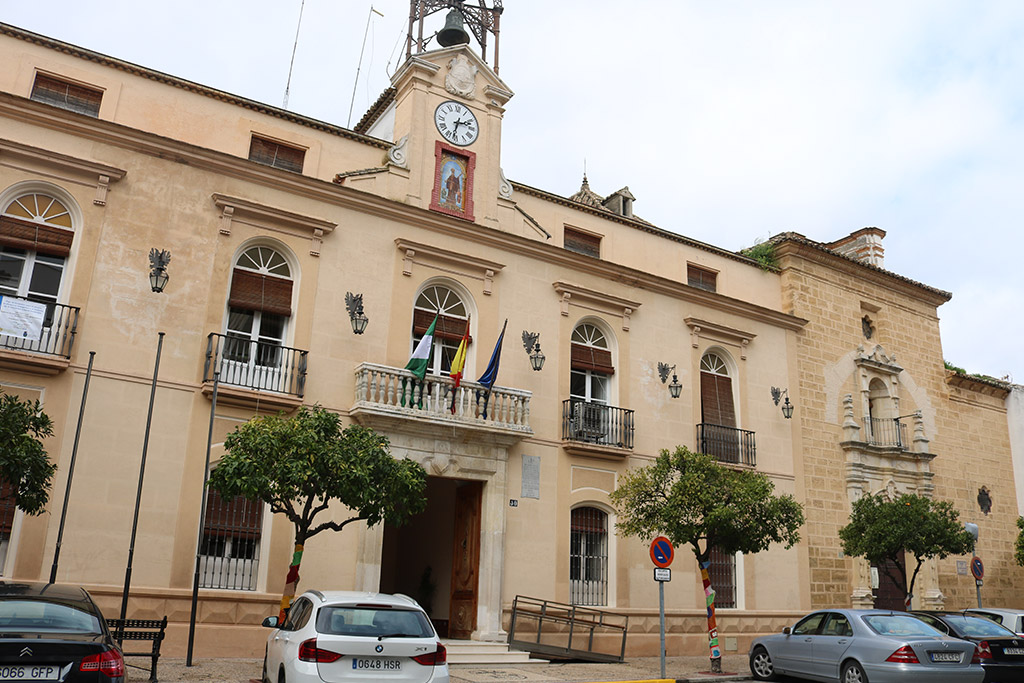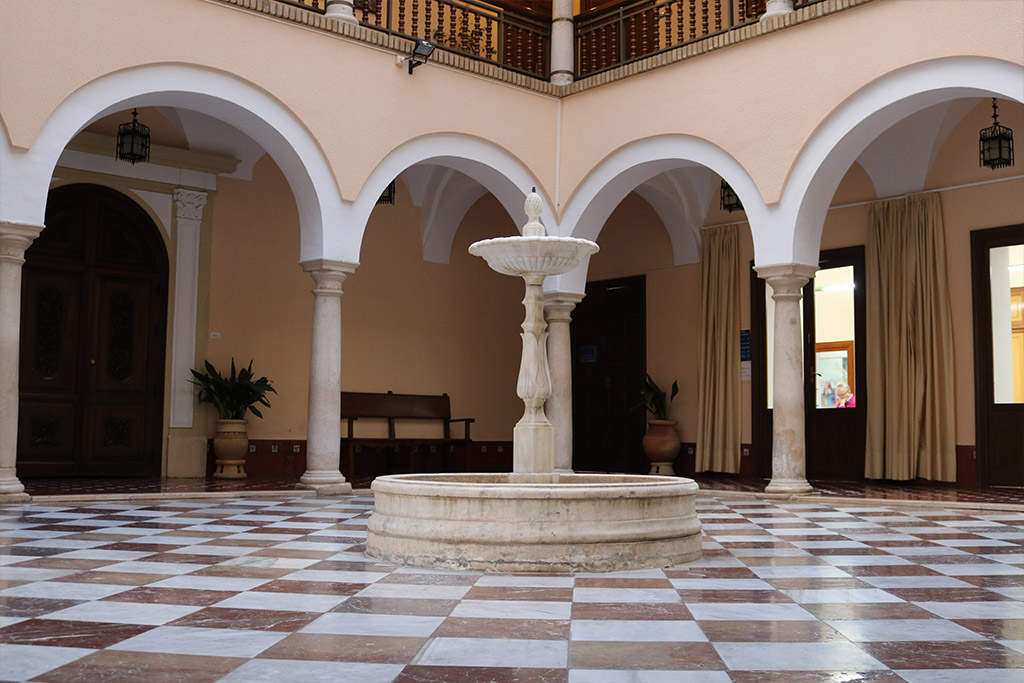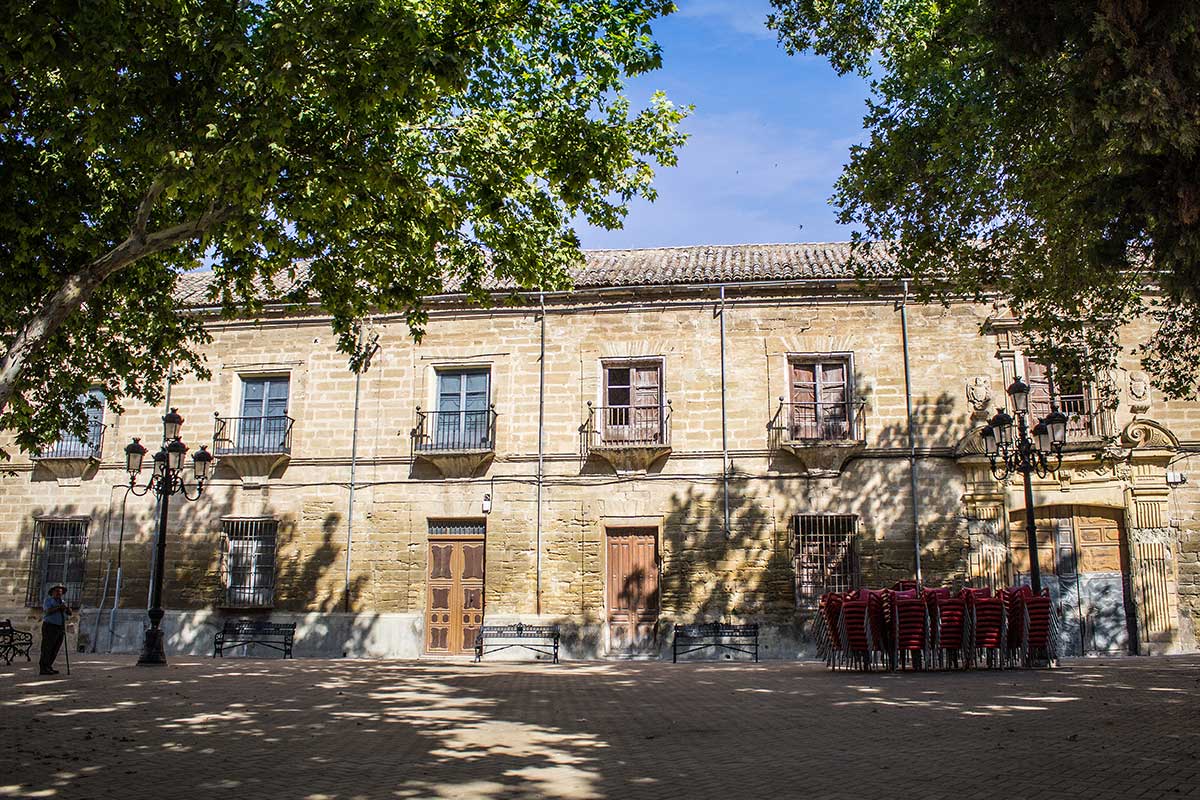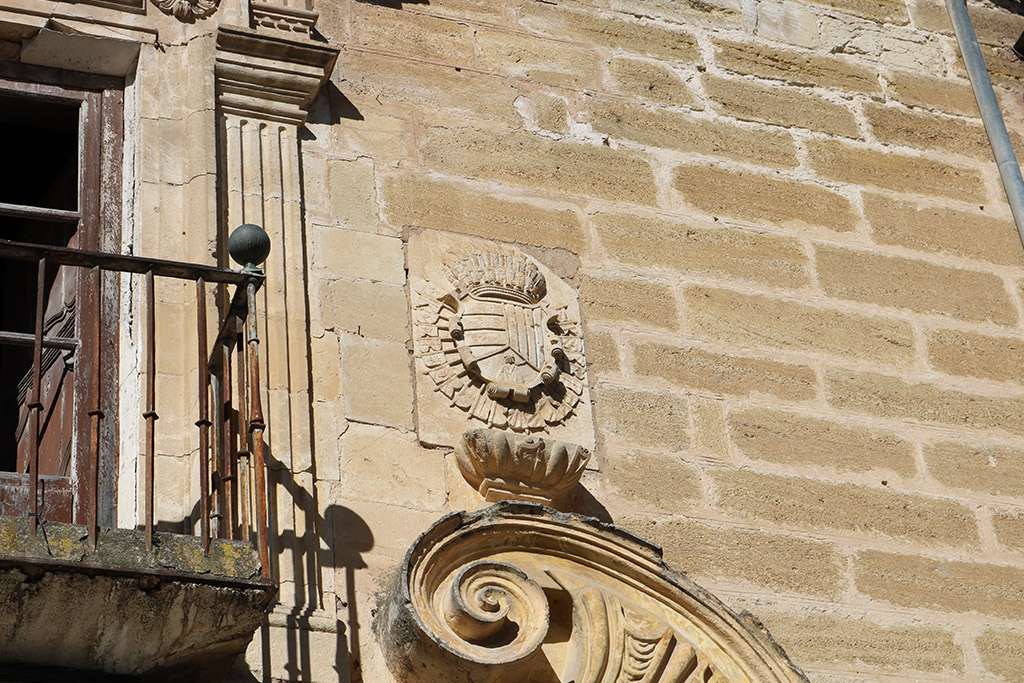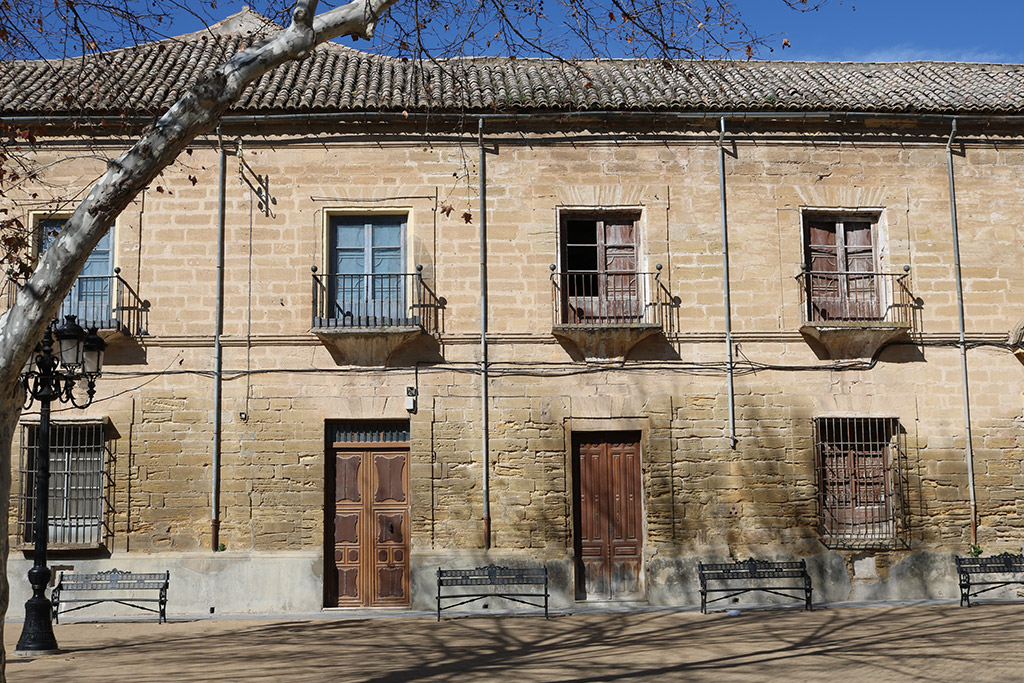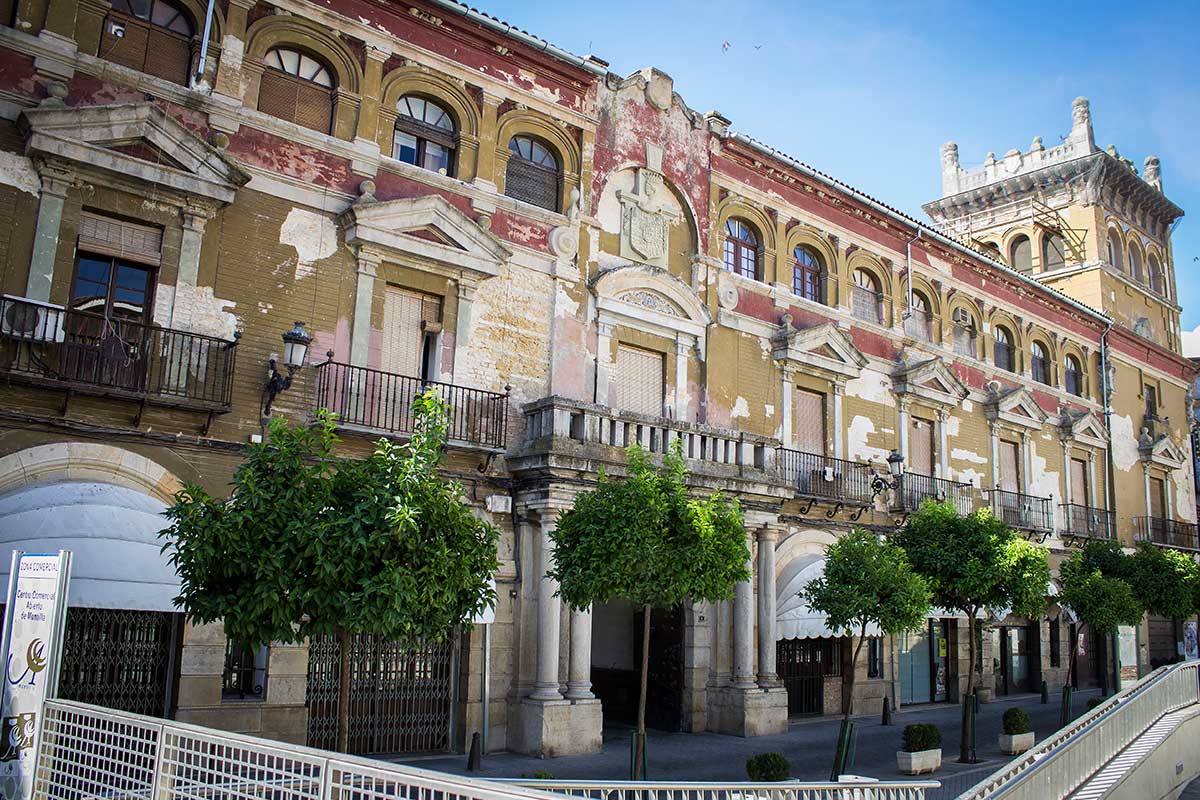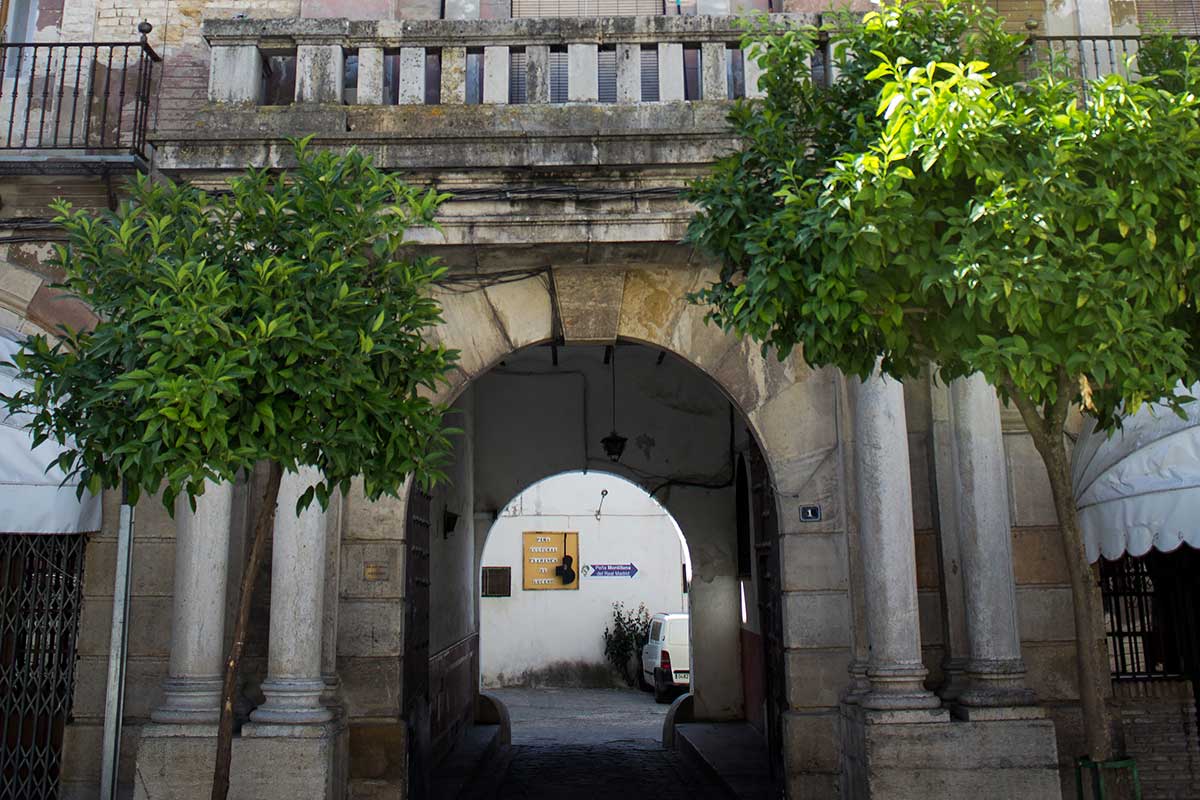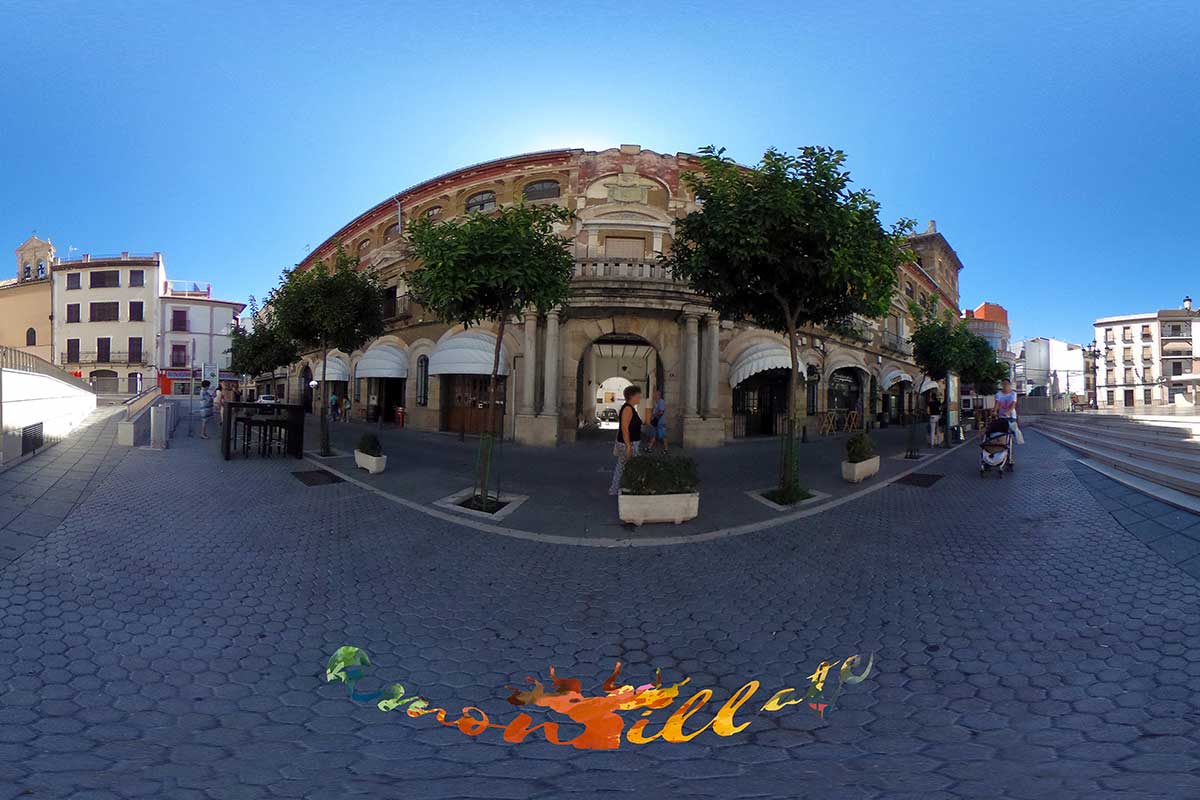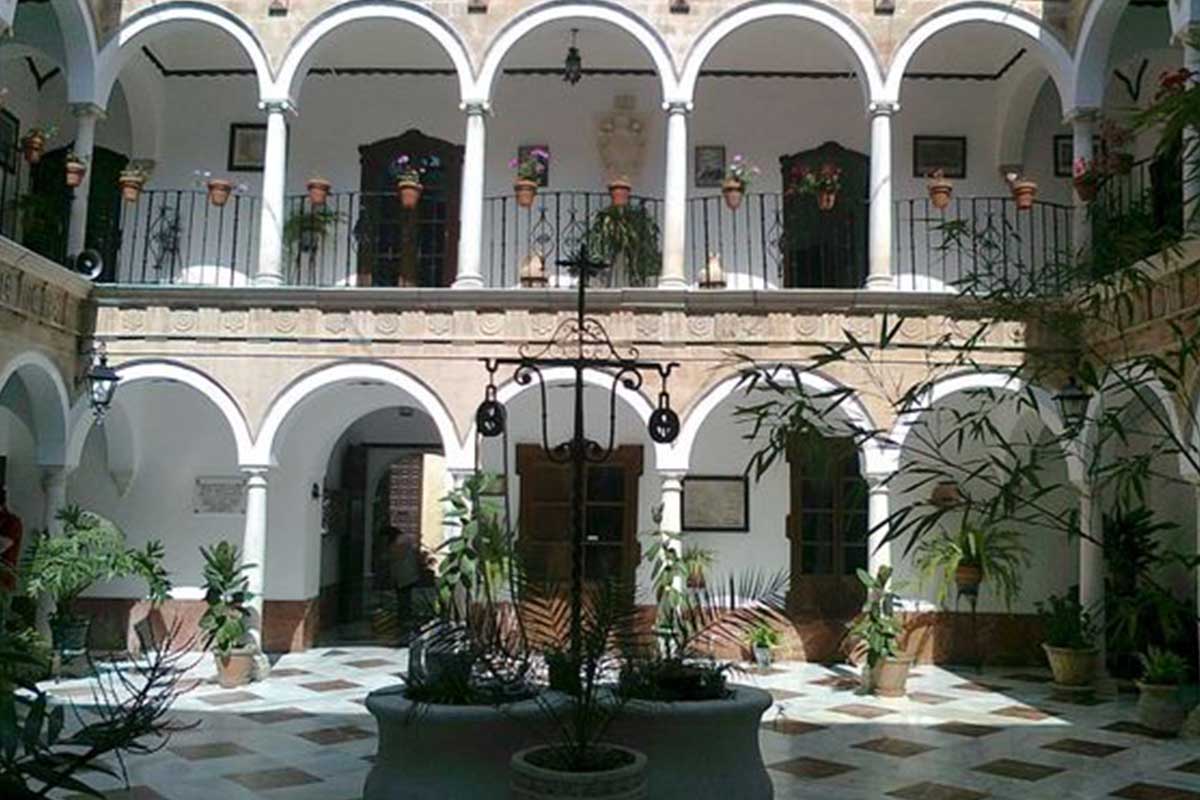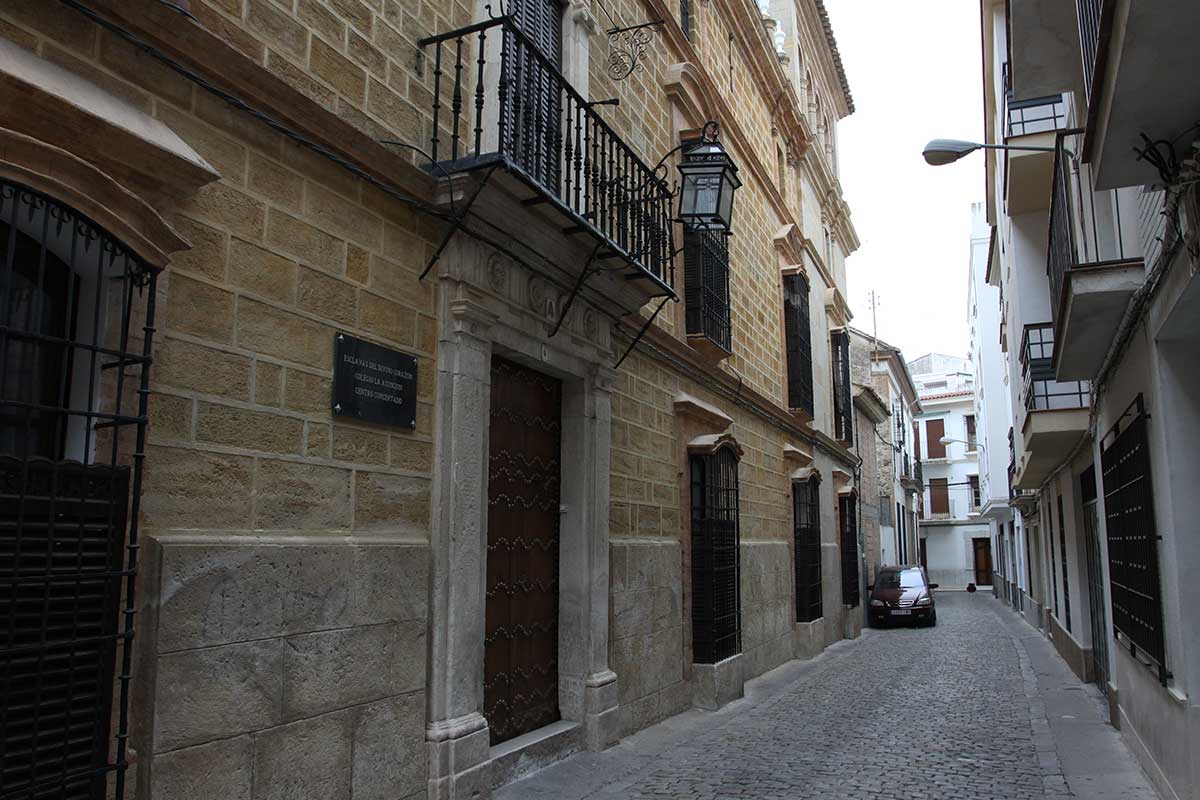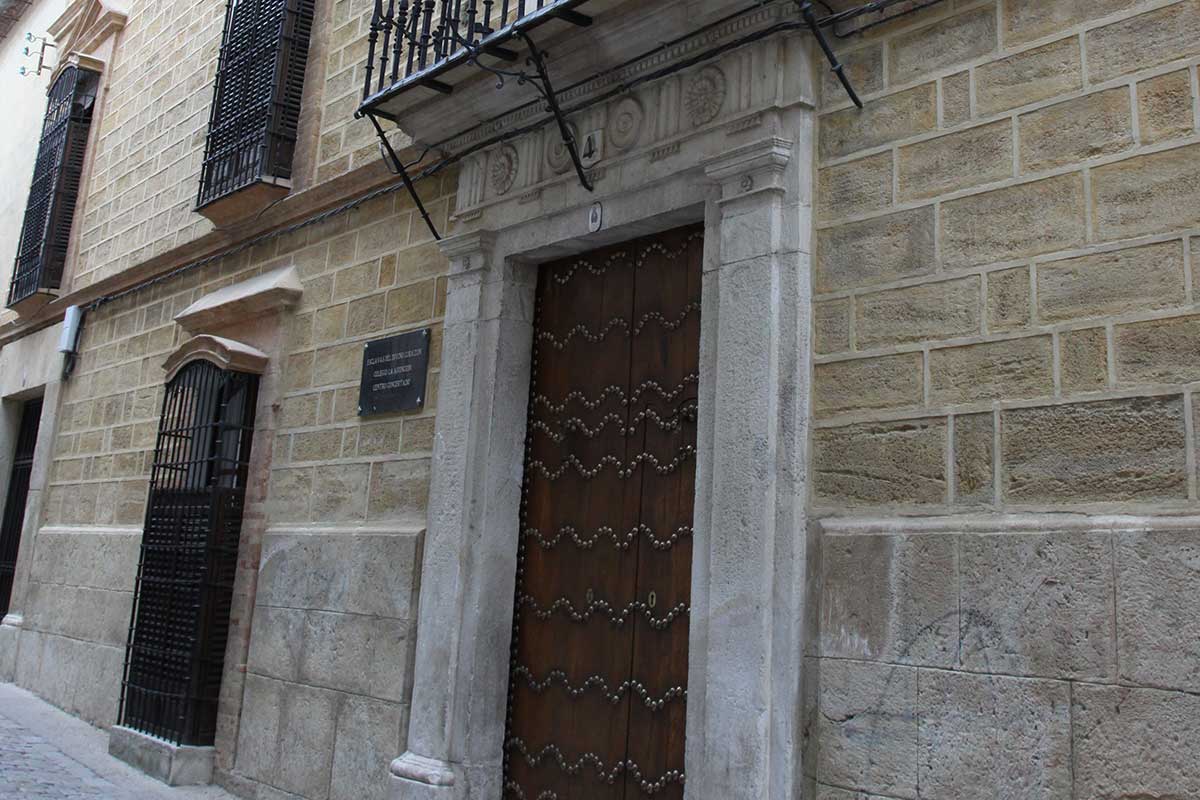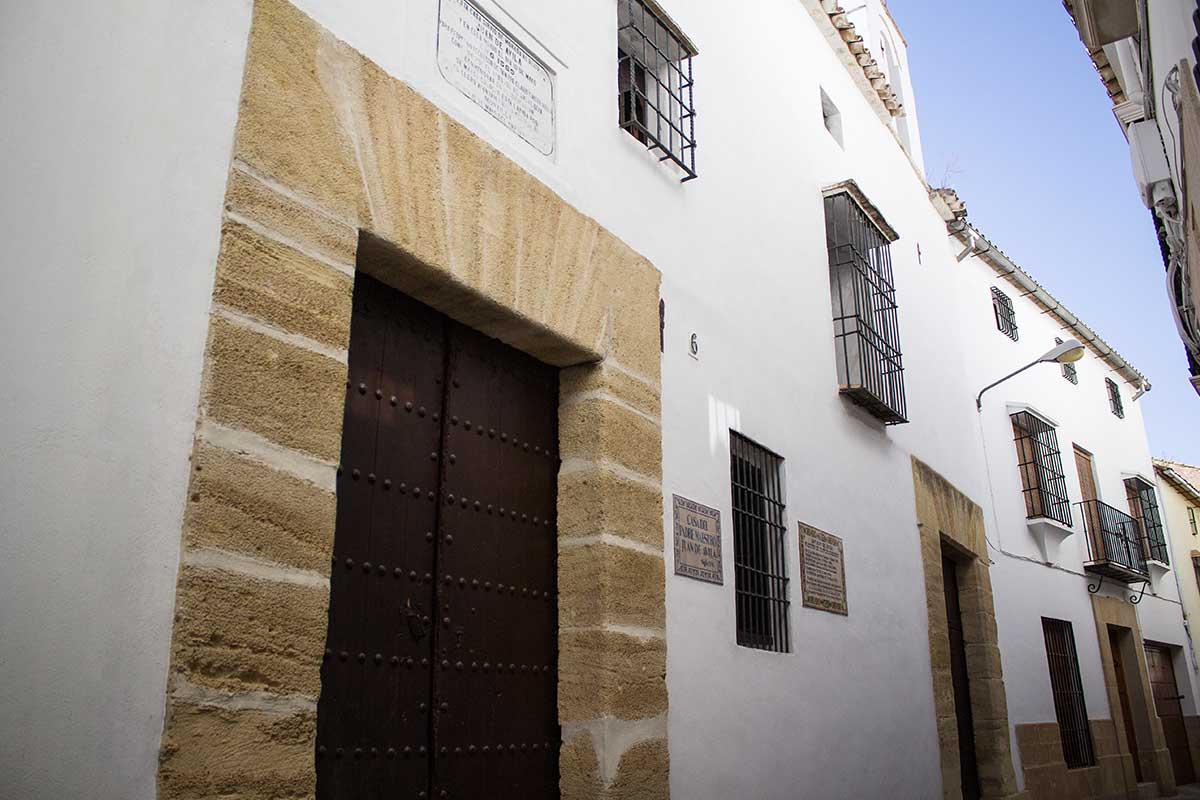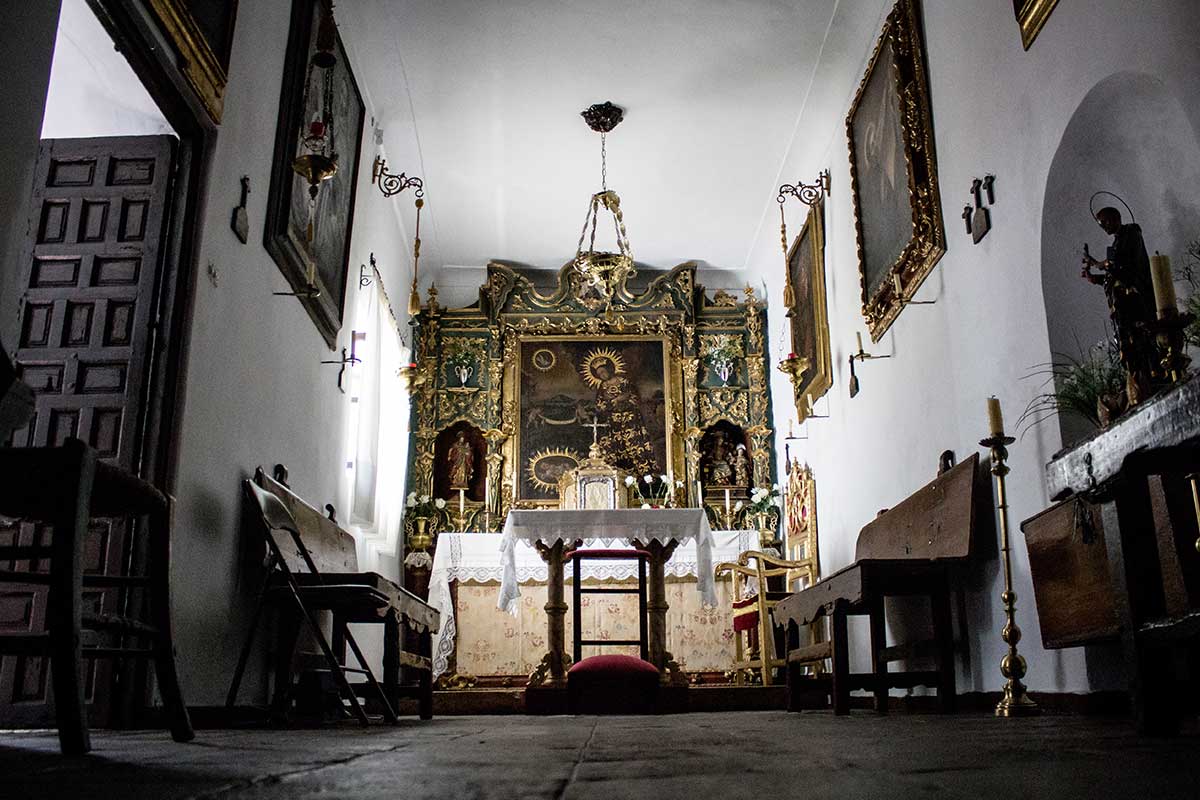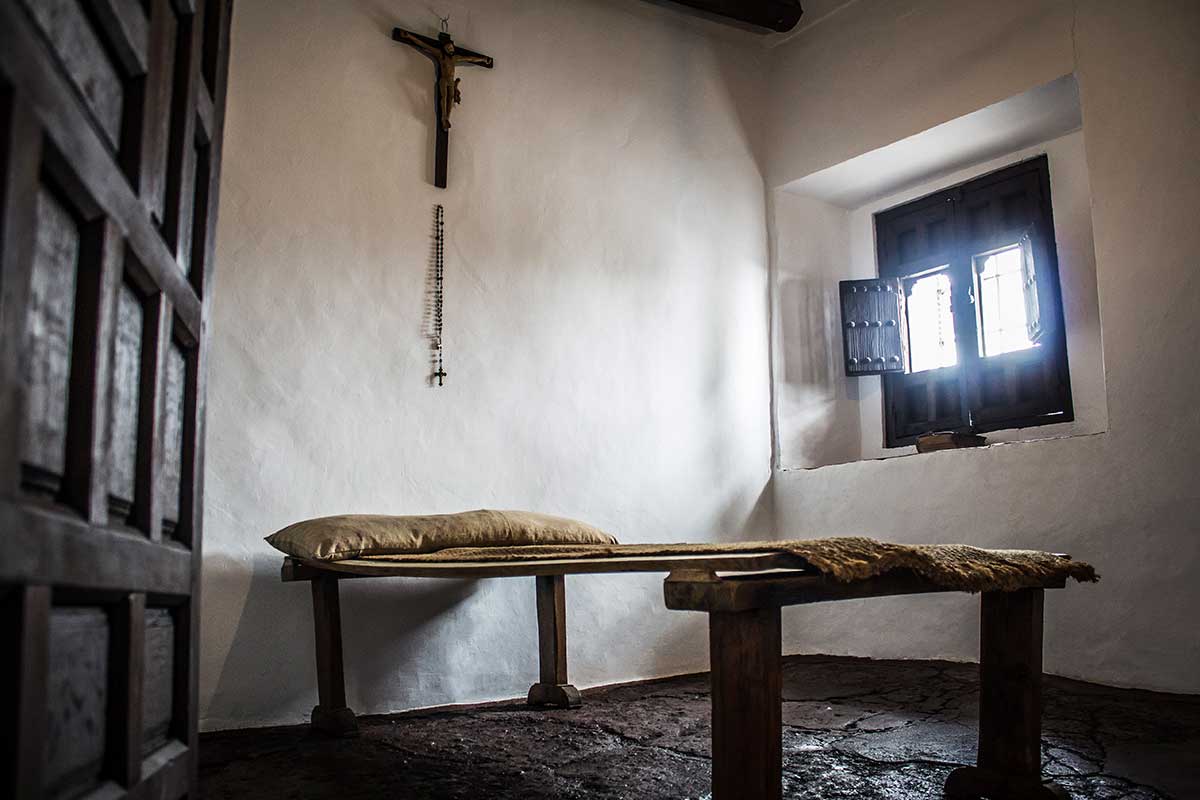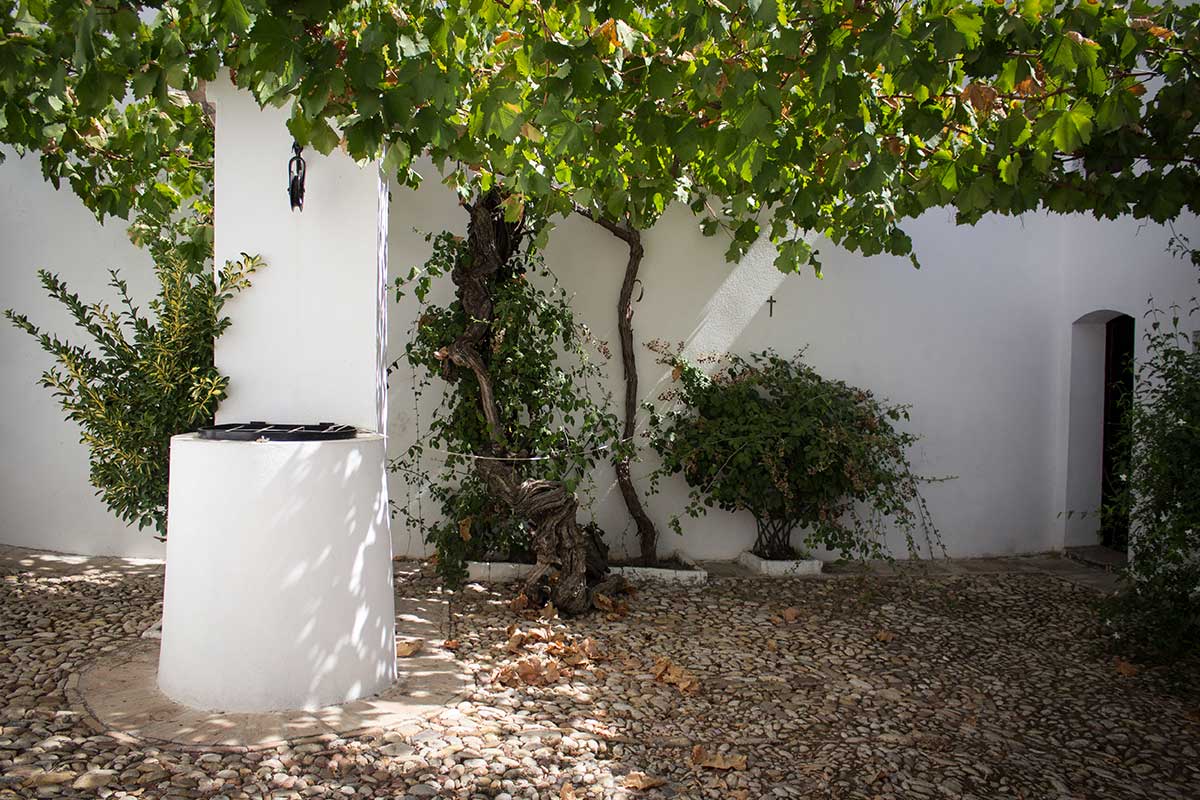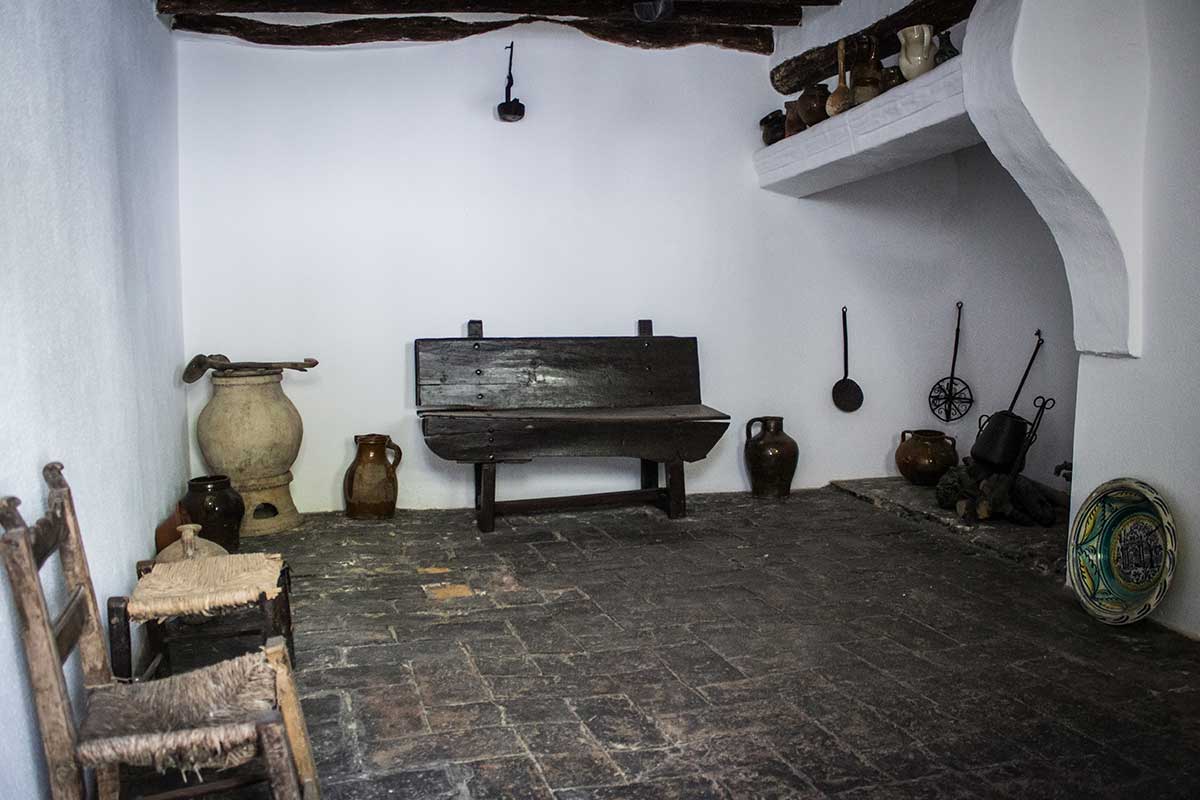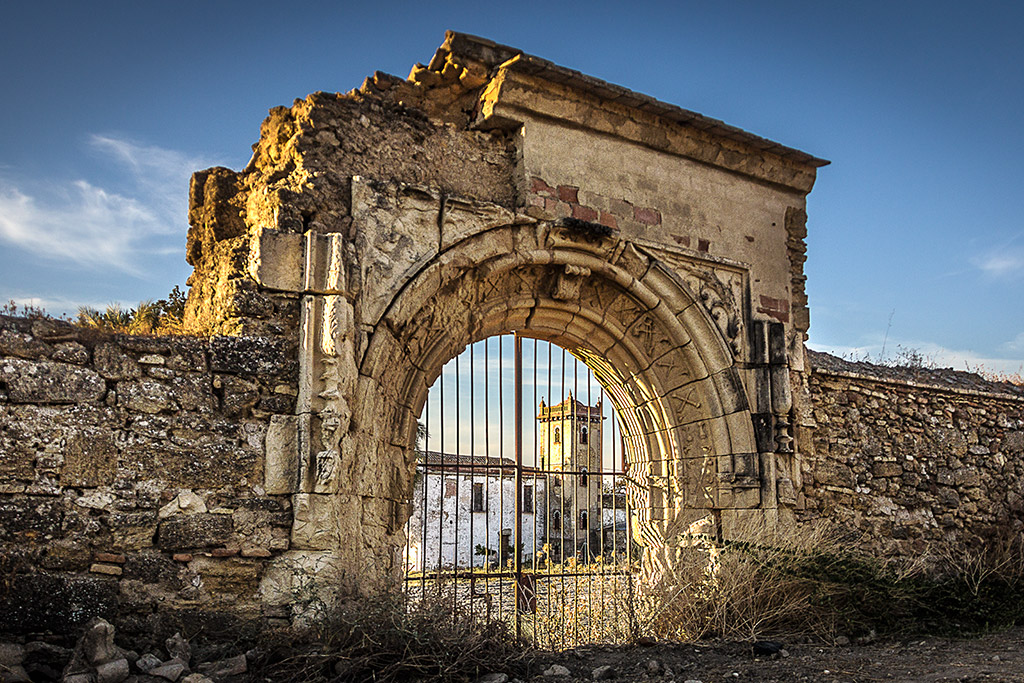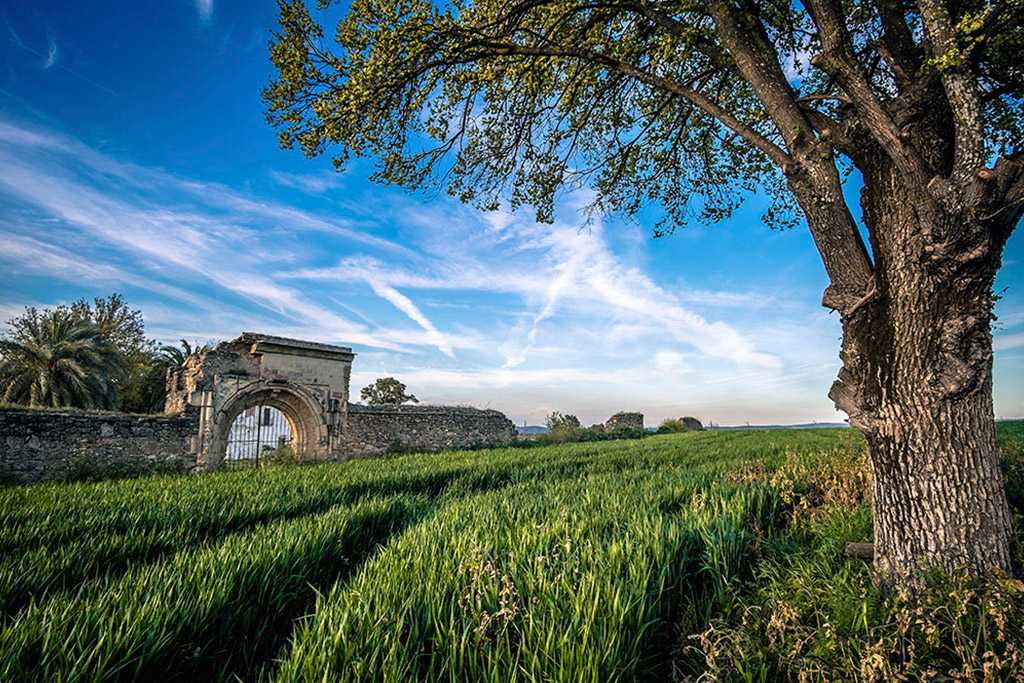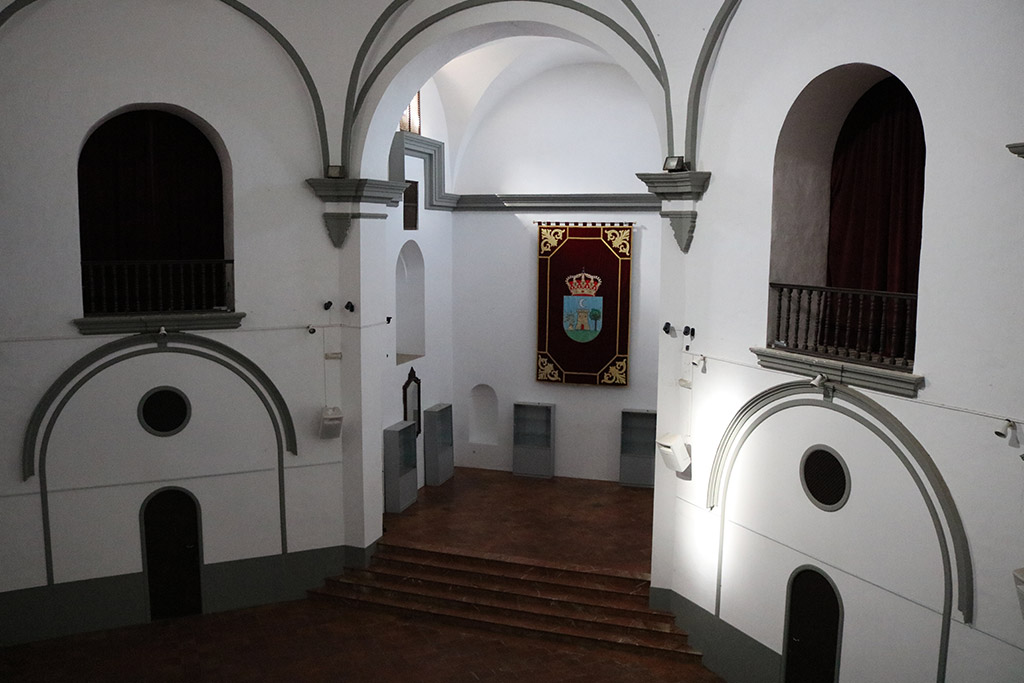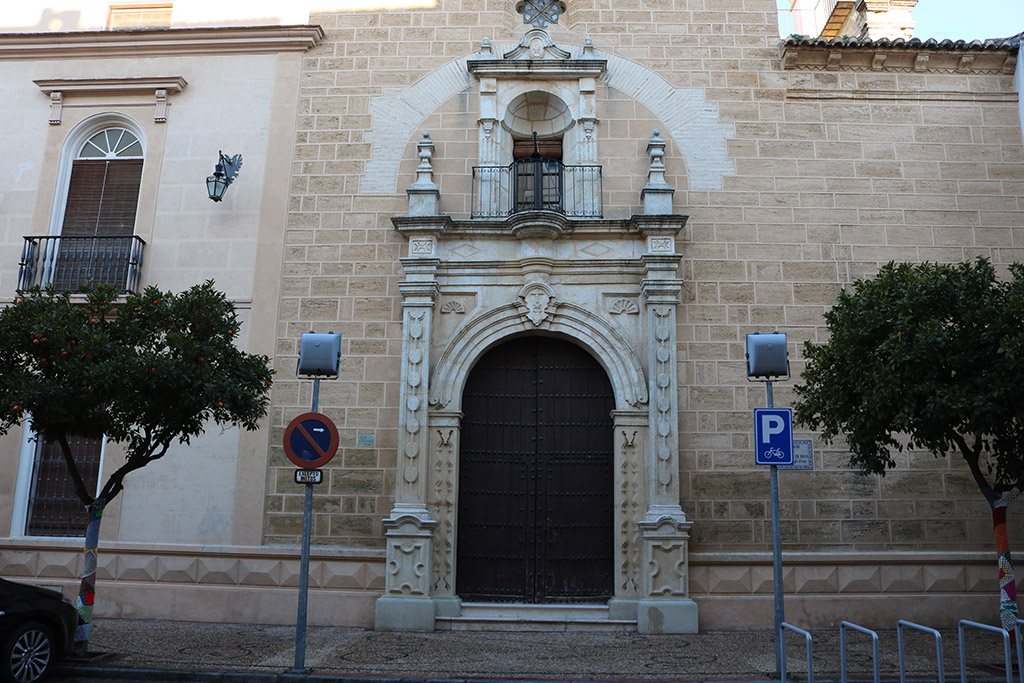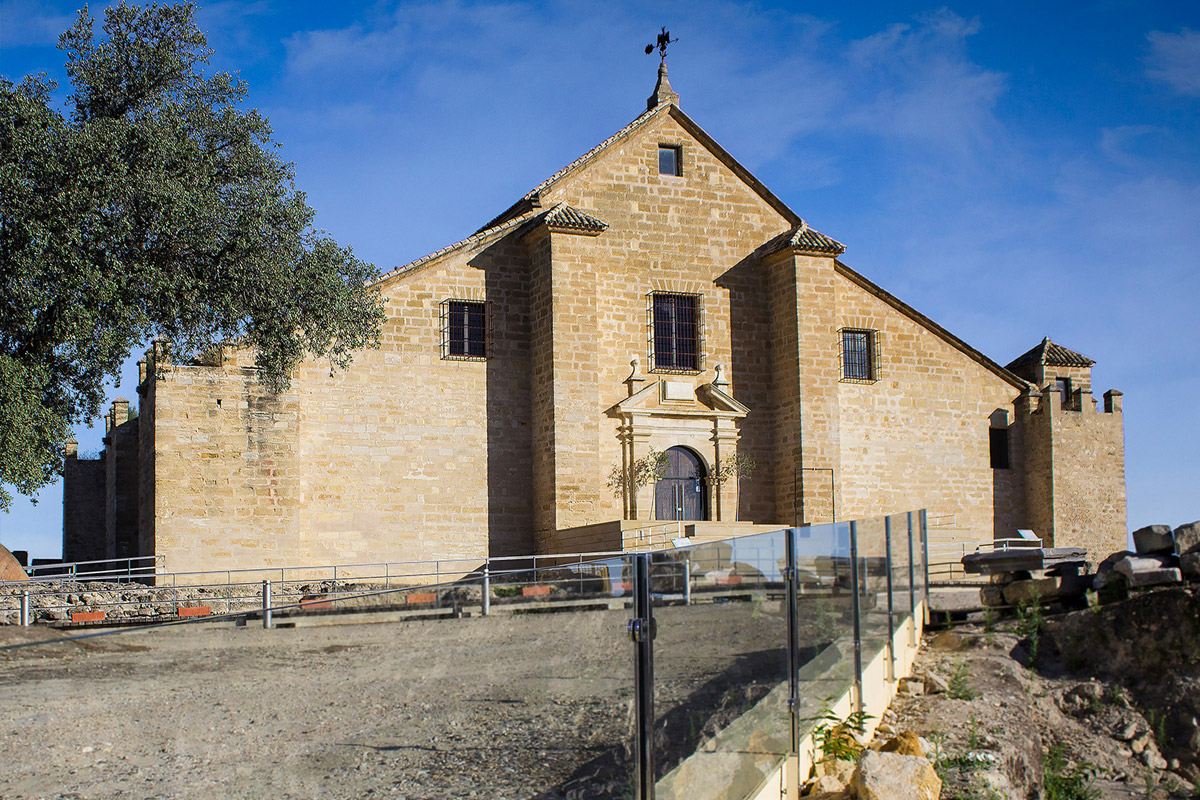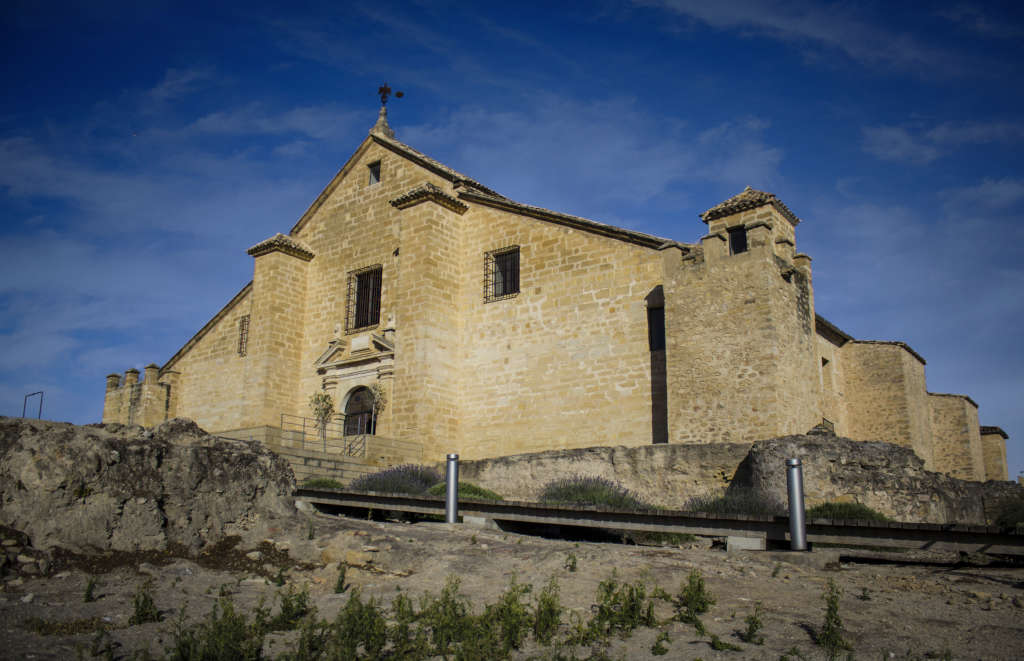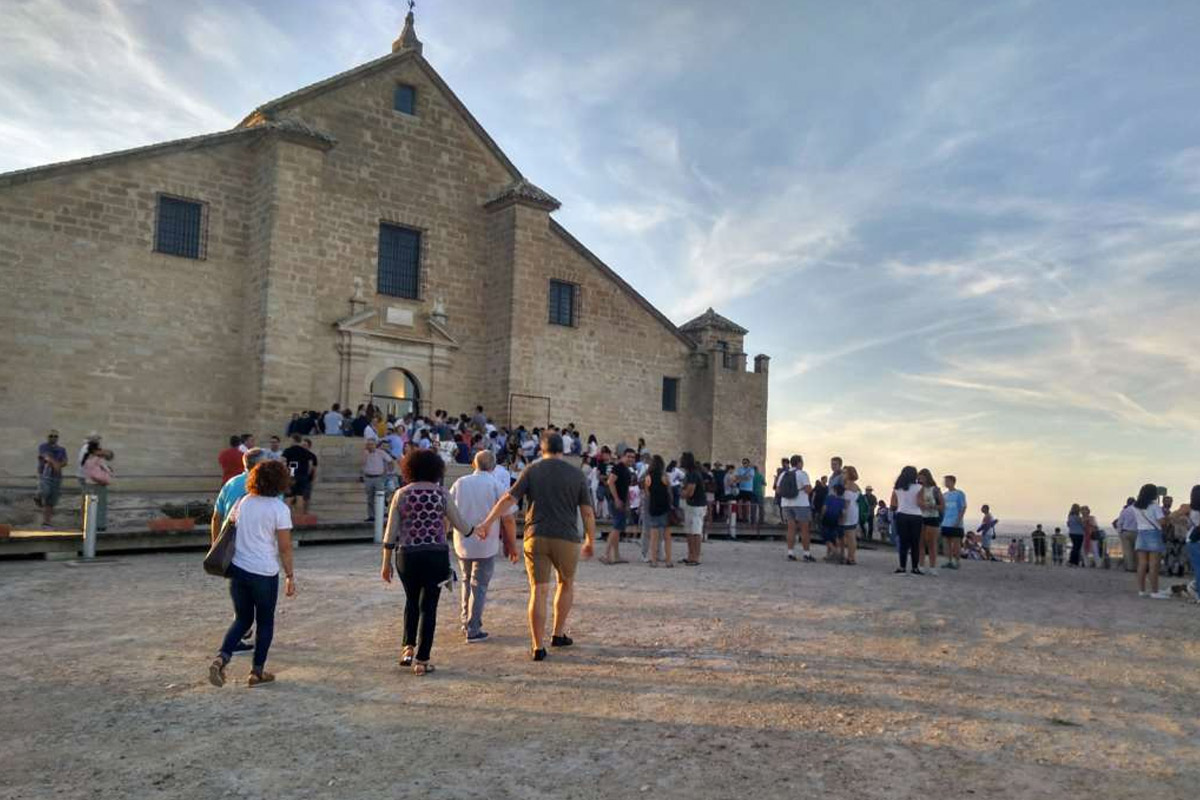City Council
Montilla city council was erected in 19th century during the Romantic period in a neoclassical style, at the place where the Coventry of San Juan de Dios was located. Works were directed by José Ramón Garnelo y González. The façade of San Juan de Dios Church is preserved behind as a second body to avoid taking the protagonism of the original entrance.
At the back of the city council, in the newly constructed building ‘Solera’ we find a wall painting devoted to harvesting, by the Argentinian artist Gissel Rosso.
This building, which was the ancient San Juan de Dios Convent was the main setting of the literary work ‘Dialogue between Scipio and Berganza’ by Miguel de Cervantes.
” So we arrived at Montilla, within the estimated time , to Montilla, birthplace of the great Marquis of Priego, where my master was hosted ” is a textual quote by Miguel de Cervantes that shows his passage through the building of the current city council which in that time was occupied by a hospital.
Useful information
Tl.:+34 957 65 01 50
Address: Puerta de Aguilar Street
Timetable: M-F 8:00-15:00; Saturday and Sunday: Outside.
Palace of the Dukes of Medinaceli
It was the Place of residence of the Marquesses of Priego, highlighting the figure of Catalina Fernandez de Cordoba, a relevant women for Montilla’s history and patron of great arts. It was also the residence for the Marquesses after the destruction of the castle by the King Fernando ‘El Católico’ in 1508.
The appearance of the building is simple and sober, and suffered a expansion process during 16th century, it was lately restored and nowadays it has been divided in two private houses. Its façade is made of golden stone and devided in two floors with several parallel vains. The main entrance, which is richly ornamented, is located at the right side; and its superior balcony is flanked by Priego and Feria emblems.
The palace and the convent are conected through the pass which leads to Benedicto XIII street.
The façade, which is the only visible part, has a sober mannerist style. The main entrance is located at one of the façade ends and at the opposite side we find a half-pointed arch, known as Santa Clara’s Arch, a passage directly connected to the convent.
Useful information
Tl.: 957 65 23 54
Address: s/n Llano de Palacio Square.
Timetable: Outside.
La Tercia
In addition to their strong economical activity, the Alvear family is well-known in Montilla for building construction like this one. This residential building was built by Francisco de Alvear y Gómez in replace of the ancient family cellars and the granary.
Its structure is similar to Monterrey Palace of Salamanca, a rectangular body and a tower at a side. It is that big that it occupy one side of the square in which it is located.
In the lower level you will find several taverns and bars to enjoy this enchanting corner.
Useful information
Tl.: +34 957 65 01 50/ +34 957 65 23 54
Address: José de los Ángeles Street.
Timetable: Outside.
House of Don Diego de Alvear
It is a manor house from 18th century ordered to be built in a Neoclassical style by Don Diego Alvear y Ponce de León. It was later donated by his nephew, Don Francisco Alvear y Gómez who was VI Conde de la Cortina. The main courtyard, a secondary courtyard where we find a cave and the small chapel, located at the first floor.
Don Diego de Alvear y Ponce de León was an important character for Spanish scientific expeditions during 19th century. He was also related with the shipwreck of Las Mercedes frigate; he lost a large part of his patrimony and family (his wife and children), only one of his sons survived thanks to the fact that they travelled in another ship.
Useful information
Tl.: +34 957 65 02 50/ +34 957 65 23 54
Address: 6 Don Diego de Alvear Street
Timetable: Outside (“patio” during school hours)
House of San Juan de Avila
St Juan de Ávila lived at this modest house the last 17 years of his life, until his death in 1569. He refused to live at the ‘Palacio de Medinaceli’ with the Marquesses of Priego; is for that reason that they assigned him a house out of the palace but close to them. Nowadays, the house remains intact as it was in 16th century. It is a essential place to understand his written work which permitted that he was entitled Doctor of the Church.
St. Juan de Avila was the confessor to the countess. He founded the Jesuit school in Montilla. At this house he was devoted to his writings: ‘Cartas‘, the final version of ‘Audi Filia‘, sermons; as well as his writings for the ‘Council of Trent’
The house hosts relics, sculptures and paintings from 16th, 17th and 18th centuries.
Useful information
Tl.: +34 604 42 45 78
Address: 10 San Juan de Dios Street
Timetable: by appointment one day in advance.
St Lorenzo Arch
This arch is the entrance to San Lorenzo covent and is the only part of the convent that still stands. Its construction is due to the foundation of the female jesuit order which settled down at Santa Clara convent by order of Catalina Fernandez de Cordoba and in which her sister, Maria Jesús de Luna entered.
It was a very important place for San Francisco order and for the solanists who had to leave the monastery in 1794 because of preservation issues.
The few surviving elements reminds Hernan Ruiz I style. The entrance was embellished by the emblem of the Marquesses of Priego, which nowadays can be found at the Local History Museum.
San Francisco Solano entered this convent for his novitiate, despite of had being formed by the Jesuits, concurring in Montilla with St Juan de Avila.
Useful information
Tl.: +34 957 65 01 50/ +34 957 65 23 54
Address: Calle Batalla de Garellano
San Juan de Dios Building
This church dates from the end of the18th century, erected in the same place where the old chapel of Santa Catalina was located. The most interesting fact about the building is its octogonal plan attributed to Fray Francisco Álvarez. Nowadays, it is used at Exhibition and Cultural Activities Hall
Useful information
Tl.: +34 957 65 23 54
Address: 10 Puerta de Aguilar Street
Timetable: Outside. You can visit indoor when there is a cultural event.
Castle
The remains of the old Castle of Montilla are located on the top of a mound, from which the whole city is seen. It is the castle of the old Lords of Aguilar, a great medieval fortress ordered to be demolished by Ferdinand the Catholic in 1508 as a punishment for the behaviour of Don Pedro Fernández de Córdoba, the first Marquis of Priego. At that time the whole site was destroyed, although some vestigeswhich allowed it to extend to a set of trapezoidal measures surrounded by several towers, which came to be called La Dorada, del Sol, Centinela, La Defensa, Minerva and Diana.
Useful Information
Tl.: +34 957 65 23 54 / +34 672 78 05 21
Address: s/n Iglesia Street
Timetable:
WINTER M-F 10:00-14:00; Sat-Sun-Public Holiday 10:00-13:00; Fri-Sat afternoon 16:30-18:30 (from October).
SUMMER M-F 10:00-14:00; Sat-Sun-Public Holiday 10:00-13:00; Fri-Sat afternoon 18:00-20:00 (from May).

